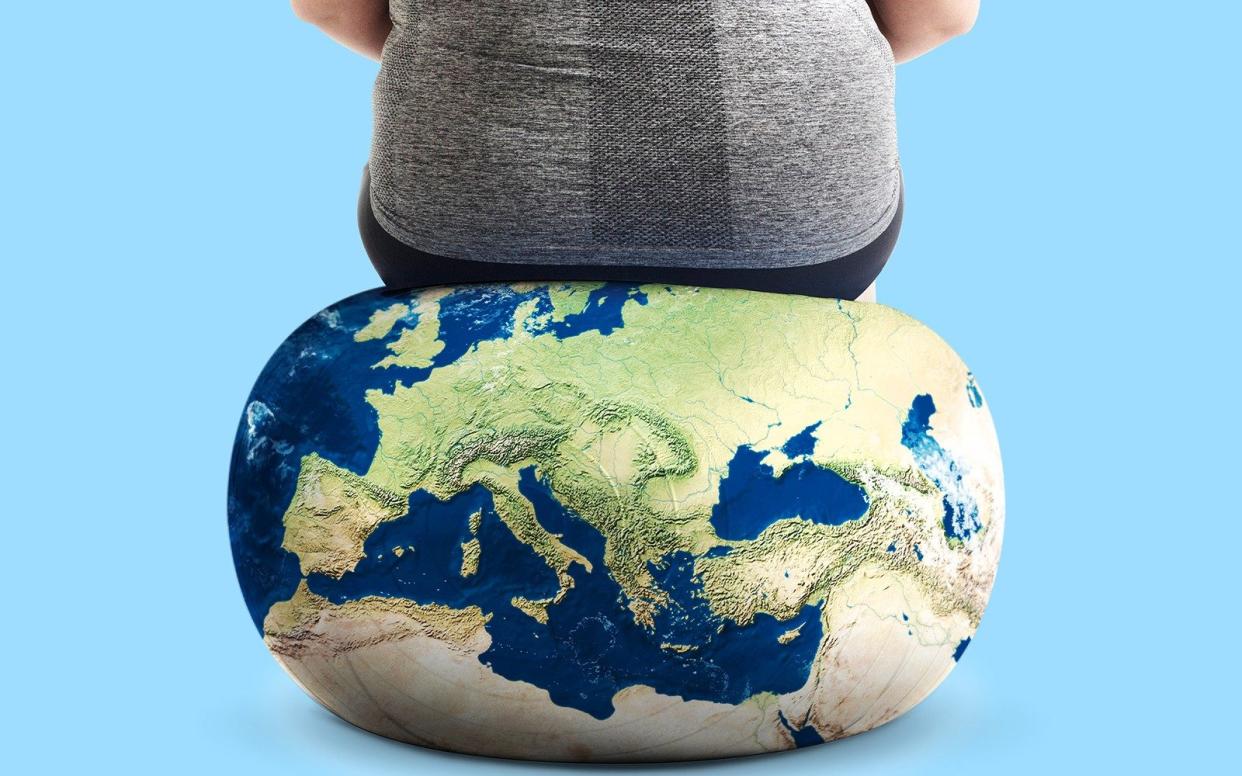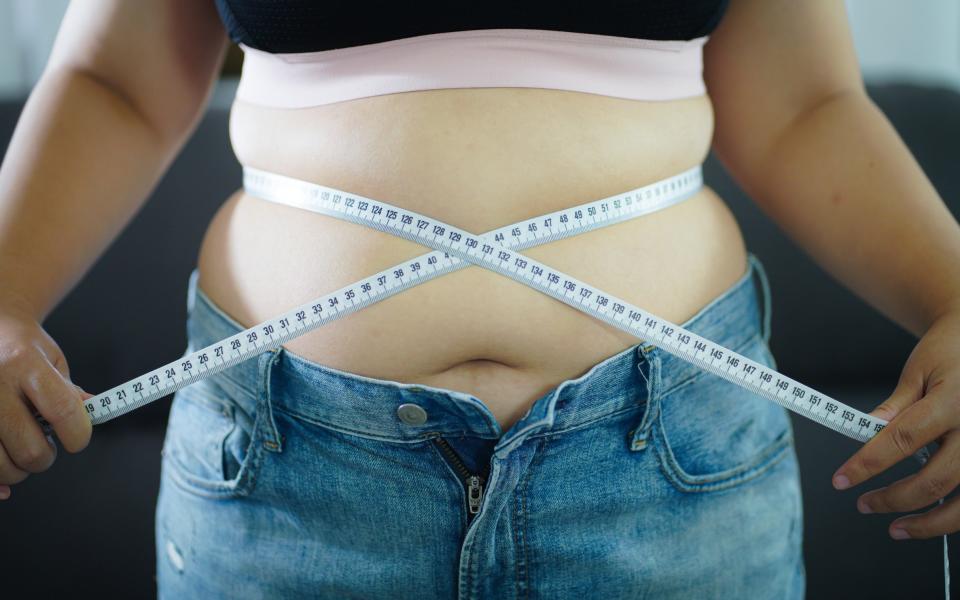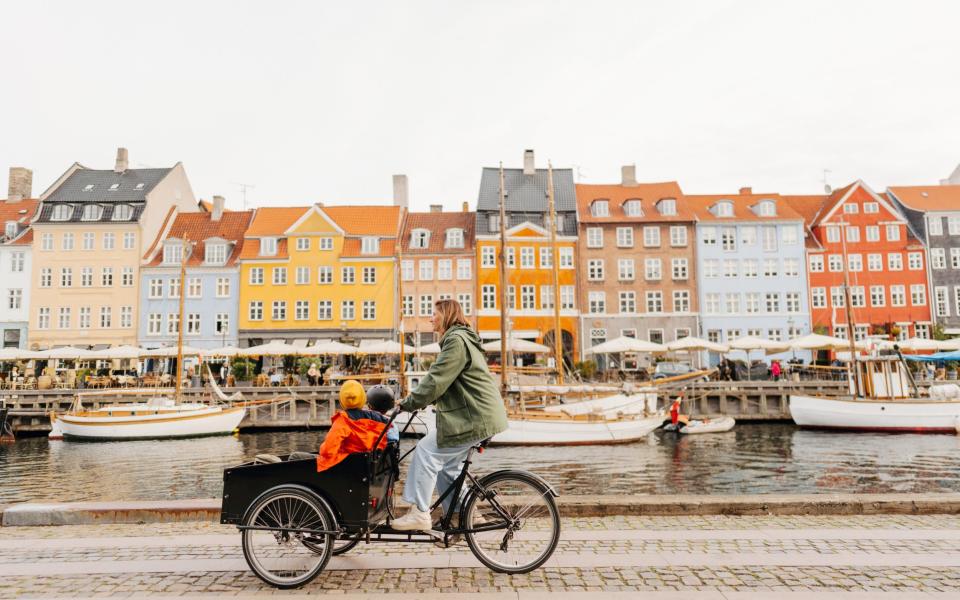The countries that are beating obesity – and what we can learn from them

Perhaps you have seen the clip already. Three British women, walking through a busy Japanese high street, begin to attract surprise attention. “Everybody’s staring,” says one. “There’s a guy behind you, looking,” adds her friend. These are not predatory or lascivious stares however. Rather, they are the product of a pronounced difference in weight between the average British person and their Japanese equivalents.
The video comes from a new Channel 4 documentary, Around the World in 80 Weighs, which follows six spirited British contestants around the world, exploring how different countries are affected by, and tackle, obesity.
Because the condition is, indisputably, a global crisis. Last year, the World Obesity Atlas concluded that over half the world’s population will be obese by 2035. No region, they said, will be unaffected and the cost of treating illnesses linked to the condition will top $4 trillion (£3.17 trillion) every year.

“Obesity represents one of the major public health challenges of our time,” confirms Dr Saira Hameed, a consultant in endocrinology and diabetes and leading NHS weight-loss expert. “Respiratory clinics are busy with sleep apnoea, cardiologists are seeing people with hypertension, orthopaedics are managing the consequences of excess weight on joints, surgeons are increasingly finding they cannot safely operate on people due to a high BMI and cases of type 2 diabetes have skyrocketed during my professional lifetime.”
While not unique, however, the UK’s obesity problem is weighty. “Two thirds of UK adults are now overweight or obese, which means in Britain, in 2024, it is more ‘normal’ to live with weight problems than to be a healthy body weight,” says Hameed. “Compare these numbers to a country like Japan, which is similarly rich and developed and yet has a 4 per cent obesity rate.”
“The UK has one of the highest child obesity rates in the world, and a high adult obesity rate as well. It is certainly one of the worst countries in Europe,” agrees Prof Franco Sassi, who works in international health policy and economics at Imperial University. But obesity is what The British Medical Journal has termed “a wicked problem”, he points out, meaning that it is “extremely complex and resistant to solutions ... What’s really needed is a very comprehensive policy approach, including lots of measures that are complementary and synergistic with each other.”
So what are various nations doing to shrink their obesity rates?
The UK
Our average diet is unhealthy, our physical activity declining, suggests Prof Sassi. When it comes to public policy interventions, however, we are not doing too badly: “If anything, it’s actually other countries that are trying to learn from the UK.”
Way back in 2013, we became one of the first countries to introduce the “multiple traffic light label” – a colour-coded system displayed on food packaging and meant to illustrate, at a glance, whether a product is high (red) medium (amber) or low (green) in fat, saturated fat, salt and sugars. Useful, but neither clear to all consumers, or compulsory for all manufacturers.
Five years on, a tax of 18p per litre was introduced for soft drinks containing 5-8g of sugar per 100ml, and 24p per litre on those containing more than 8g per 100ml. This, says Prof Sassi, was “a very successful policy ... It not only contributed to reducing people’s consumption of sugar sweetened beverages, but also to the reformulation of those soft drinks. The sugar content of some reduced by up to 40 per cent in response to the tax.”
In 2022, junk food disappeared from supermarket checkouts and aisle-ends too. But other measures laid out in the Government’s 2020 obesity strategy, like a ban on two-for-one junk food deals, and a 9pm watershed for advertising unhealthy food – have yet to materialise.
Instead, the Government’s most recent scheme is a £40 million pilot, making anti-obesity drugs more widely accessible. On one hand, these drugs offer hope to those who find it hard to lose weight any other way, suggests Prof Sassi. On the other hand, there is a risk that their use as public policy intervention: “will make it even more difficult for governments to implement policies that are politically challenging because they interfere to some extent with individual choices: taxes on foods that people cherish, or restricting advertising, which industry does not like.”
France
Though not immune to the problem, (obesity among adults doubled between 1997 and 2020), our French cousins are significantly trimmer than we are, with 17 per cent of the population estimated to be obese compared to 25.9 per cent in England. This is not just because haute cuisine comes in tiny portions, while a Gauloise and café noir have traditionally been considered a substantial breakfast.

Like us, they have long adopted “Nutri-Score” labelling on food packaging, plus a soft drinks tax (albeit a lower one). Unlike us, however, they been less shy to introduce more restrictive and prescriptive measures. Last year, politicians pledged to increase the soft drinks tax, and introduce a new one on high-sugar processed foods. Free-refills of fizzy drinks have already been banned from restaurants, while health warnings have long taken the fizz out of TV ads for junk foods and beverages (“for your health, eat at least five fruits and vegetables a day,” being a common one.)
Last year, it was announced that an intervention programme, aimed at three to 12-year-olds at risk of obesity, will be rolled out nationally. Called “Mission retrouve ton cap”, the programme involves free dietary, psychological and physical activity assessments and guidance. Policies that address childhood obesity are, Prof Sassi suggests: “crucial. The link between childhood obesity and adult obesity is so strong. It’s incredibly difficult for children who have obesity to lose weight when they grow up.” Childhood then, is the time for policy interventions.
Japan
In 2019, the World Economic Forum found that Japan had fewer overweight children than any other developed nation, “in part due to healthy school lunches”. The country has one of the highest life expectancies in the world, but wasn’t always this way. In fact, in the 1960s, Japan had the lowest life expectancy in the G7, linked to a sudden influx of imported, processed foods.

In response, school lunches became free, and were designed by nutritionists. More controversially, in 2008, the Metabo Law also introduced regular check-ups for the over 40s, measuring waist size. Those exceeding government limits – 33.5 inches for men and 35.4 inches for women – are given dieting and weight-loss guidance. In Japan, companies are legally required to measure their employees’ waists every year. Businesses can be fined if too many workers fall short.
These, however, are “relatively old interventions,” says Prof Sassi, “and the biology of obesity is quite different in Asian populations” (where lower BMI and waist circumferences lead to higher morbidity and mortality risks). He is excited about a more recent, European intervention that could potentially be translated into other countries.
Slovenia
In the years following the break-up of Yugoslavia in 1990, lifestyles changed dramatically for the people of Slovenia. Annual consumption of chocolate and biscuits rose by almost 60 per cent. The percentage of homes with colour televisions rose from 72 in 1990 to 96.3 in 2000, while the proportion with personal computers increased from 12 per cent in 1991 to 46 in 2000. More calories and less movement meant that childhood obesity rates rocketed. But that trajectory has since been stopped, partly thanks to interventions across the country’s schools.

“The Slovenian programme effectively has two components, both aimed at childhood obesity,” says Prof Sassi. “One is the provision of additional physical education teachers, who work with children to increase the levels of physical activity, not only within the school curriculum, but also through extracurricular activities. The second component is the close monitoring of children’s physical fitness at school. This goes beyond the amount of physical activity they do, and takes into account a number of measurements like waist size.”
Last year, a study published in the journal Obesity found that, by upping children’s physical activity to one hour a day, the programme significantly lowered BMI among children with obesity.
Latin America
In 1994, a trade deal with the United States and Canada saw cheap, processed food flooding across the border to Mexico, drowning traditional diets. According to The Lancet, obesity rates have risen faster in Latin America than in any other region on the planet. But Mexico and its neighbours are now also pursuing some pretty radical policy interventions, suggests Prof Sassi.
For a start, the warnings displayed on their junk food is less nuanced and thus more effective than our own. Several South American countries now employ an octagonal shape – “like a stop sign” – that gives a clear indication of whether that product is high in sugar, fat or salt. “This has been shown, recently, to be the most effective approach for deterring people from consuming these products,” he explains.

Chile has taken the fight against childhood obesity further still, on this front, suggests Dr Simón Barquera, the president-elect of the World Obesity Federation. There: “if you have a warning label, then you can’t put cartoon characters on your products’ packaging. All the cereals and snacks for kids that weren’t healthy, suddenly had to remove Spider Man and the soccer player Messi from their packaging.” Meanwhile in Colombia, “any food with the warning label cannot be sold in schools or advertised to children.”
Plagued by Mexico’s highest child obesity rates, the state of Oaxaca set new standards with an outright ban on the sale of junk food and sugary drinks to children in 2020, putting sweets, fizzy drinks and crisps in the same category as cigarettes and alcohol. Brazil, however, has taken a different approach to reforming its children’s eating habits. “What you really want is to transform the food environment,” says Barquera. “For many years now, and with great success, Brazil has been doing that by ensuring that food given to children at school is made in the local area.” Its constitution requires that 30 per cent of the ingredients for school meals be sourced from local, family farms.

It is, Barquera implies, a simple way of reducing the fattening junk food eaten by children, while simultaneously supporting the production of whole foods in a market awash with cheap, less healthy processed ones.
Not to be outdone, Colombia recently became one of the first countries in the world to tax not only fizzy drinks, but ultra-processed foods like sweets and crisps. The levy will increase gradually, reaching 20 per cent in 2025.
Saudi Arabia
Soft drink taxes are now widespread across the world, but Saudi Arabia’s is notable. At 50 per cent, it is the highest fizzy drink tax in the world. And it works. “It has reduced consumption by 35 per cent,” says Barquera.
Canada
“In Quebec, marketing of unhealthy foods to children has been forbidden for many years,” says Barquera. Its 1980 law, banning junk food advertising to under-13s in all forms of media was the first of its kind, and partly as a consequence, studies suggest, Quebec still has the lowest child obesity rates in Canada.
A recent YouGov survey of more than 2,000 people found that 79 per cent of people in Britain support a similar ban on TV ads for unhealthy food aimed at children, while 81 per cent said the same about online ads.
Portugal
However, much of the marketing of unhealthy foods consumed by children is no longer served up by traditional media. YouTube banned food advertising on children’s content in 2020, but last year, a study found that 66 per cent of videos from the most popular “kid influencers” contained at least one appearance of food. YouTube, its authors wrote, is failing to “protect young children from potential exposure to unhealthy branded foods”.
In 2019, Portugal became the first EU country to introduce a law attempting to regulate the digital marketing of unhealthy foods to children. It is a complex task, says Prof Sassi, but a vital one: “These digital players are so powerful and have access to detailed data about our consumption habits. They can use that in all sorts of ways to influence our choices.”
Denmark
Danes. They are tall, toned, healthy and strong as Vikings. Right? Well, once perhaps. The number of adult Danes with obesity has trebled over the past few decades, from 6 per cent in 1987 to over 18 per cent in 2021.
The country is, of course, the birthplace of the weight-loss drug Wegovy. The stock market value of Novo Nordisk – the company behind it – is now bigger than that of the entire Danish economy.

Barquera, however, singles the nation out for a different anti-obesity strategy. “Denmark is amazing,” he says. “It’s not the easiest weather to walk or bike in, but people do! All the time! When you ask experts there, they say: it’s not because we love biking in the snow, or we’re immune to the weather, it’s because the policies make it more convenient than taking a car.”
Since 2009, Denmark has invested around €350 million (£298.8 million) in cycling projects. Specific funding is earmarked for public cycling campaigns and infrastructure such as bike lanes. Forty-five per cent of people who study or work in Copenhagen now cycle to their destination, and local government data points to its health benefits, suggesting that one million fewer sick days are recorded as a consequence. So perhaps we should all just get on our bikes.

